MORA
Matter’s Origin from RAdioactivity
The Normandy Region subsidizes the MORA project, a research program on the matter/antimatter imbalance in the Universe.
The LPC Caen and the GANIL have joined forces once again to carry out an innovative research project.
To each particle – electron, neutron, proton, etc.. – corresponds an antiparticle: it is what one calls the antimatter. Their physical characteristics are almost identical: they have the same mass, but opposite charges. According to the Big Bang theory, matter and antimatter should have been produced in equal quantities at the time of the creation of the Universe. And yet, the Universe as we observe it is composed of a very large majority of matter.
The MORA (Matter’s Origin from the RadioActivity of trapped and laser oriented ions) project, led by GANIL and LPC Caen, therefore addresses one of the most fundamental questions of modern physics: why is antimatter almost absent in the visible Universe?
To answer this question, GANIL and LPC Caen will develop, with the financial support of the Normandy Region, an experimental device that is unique in the world: it will trap radioactive ions using electric fields, align them according to their magnetic properties using lasers, and measure the angle of emission of the particles during radioactive decay with great precision.
These measurements will be compared with the predictions of the Standard Model, which provides the general theoretical framework for the properties of matter and antimatter, but is not sufficient to reproduce the observed asymmetry of abundance. In particular, they will allow to search for the existence of hypothetical particles, called leptoquarks, a popular hypothesis invoked to explain such an imbalance between matter and antimatter in the Universe. The device will benefit from the latest advances in terms of production and manipulation of radioactive beams at the new GANIL-SPIRAL2 facilities.
This project is financed by :
- The Normandy Region with 317 k€ for the LPC Caen. A total of 630 k€ for the LPC Caen & GANIL, until 15/07/ 2020.
- The National Research Agency (ANR) for 156 k€ for the LPC Caen. A total of 439 k€ for the LPC Caen, GANIL and the IJCLab over the period 2020-2024.
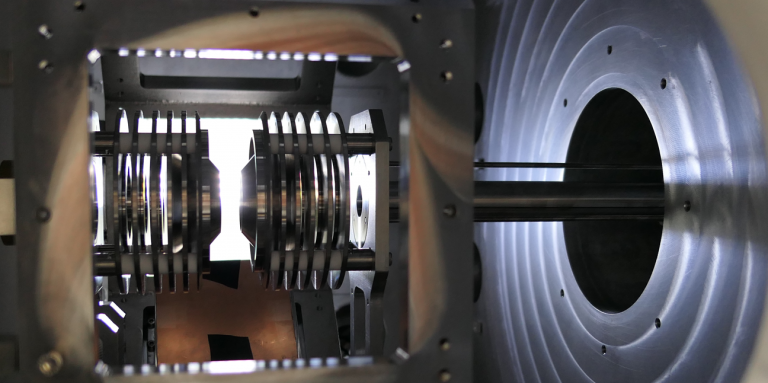
Vacuum chamber developed at LPC Caen. Ion trap with octagonal support for the detectors
- Financing : Agence Nationale de la Recherche, Réseaux d'Intérêts Normands
- Normandy Region : 630 k€
- ANR : 439 k€
- Project leaders : GANIL, LPC Caen
- LPC Caen : Etienne Liénard
- GANIL : Pierre Delahaye
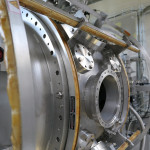
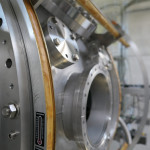
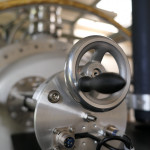
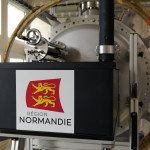

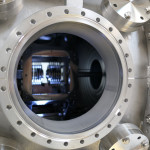
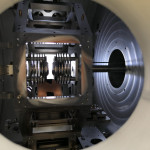
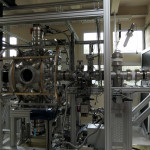
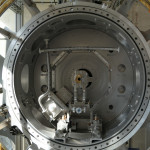
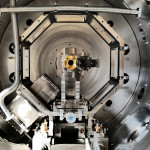

The Normandy Region's RIN (Réseaux d'intérêts normands) Research program is designed to support research projects that must involve at least two partners from Normandy. The Region wishes to simplify the mechanisms to enable researchers to propose structuring projects, consistent with the strategy of institutions, organizations and the COMUE Normandie University.



#experience | MORA
— Laboratoire de Physique Corpusculaire de Caen (@LPC_CAEN) February 28, 2022
La réinstallation en #Finlande à @jyflacclab est un succès ! 👓
Le 1er spectre des ions Na23 piégés est prometteur ...#IGISOL #GANIL #Science #nucléaire #physique #Caen @RegionNormandie@CNRS_Normandie
@IN2P3_CNRS@Universite_Caen @ENSICAEN pic.twitter.com/UZ8Hr1f1Xy
#experience | MORA est en cours d'installation en #Finlande à @jyflacclab
— Laboratoire de Physique Corpusculaire de Caen (@LPC_CAEN) January 14, 2022
#IGISOL.#GANIL #Science #nucléaire #physique #Caen @RegionNormandie
@CNRS_Normandie
@IN2P3_CNRS@Universite_Caen @ENSICAEN pic.twitter.com/7XeqVFhGBT
L’aventure MORA continue !
— Laboratoire de Physique Corpusculaire de Caen (@LPC_CAEN) September 30, 2021
Nous préparons son départ pour la #Finlande.
Nos équipes sont à pied d’œuvre pour son transfert à @jyflacclab #IGISOL.#GANIL #Science #nucléaire #physique #Caen @RegionNormandie @CNRS_Normandie
@IN2P3_CNRS@Universite_Caen @ENSICAEN pic.twitter.com/uyOZ2iGdjF
Entièrement construit et optimisé au @LPC_CAEN ce dispositif expérimental unique au monde piégera bientôt des ions radioactifs à @jyflacclab #IGISOL.
— Laboratoire de Physique Corpusculaire de Caen (@LPC_CAEN) September 30, 2021
#GANIL #Science #nucléaire #physique #Caen @CNRS_Normandie @IN2P3_CNRS@Universite_Caen @ENSICAEN pic.twitter.com/3OM1nDZs4T
✨ Nous sommes fiers de vous annoncer que le dispositif MORA a piégé ses 1ers ions stables avec une grande efficacité !#GANIL #Science #nucléaire #physique #Caen @RegionNormandie @CNRS_Normandie@IN2P3_CNRS @Universite_Caen @ENSICAEN pic.twitter.com/tw6YKc5FXo
— Laboratoire de Physique Corpusculaire de Caen (@LPC_CAEN) September 30, 2021

